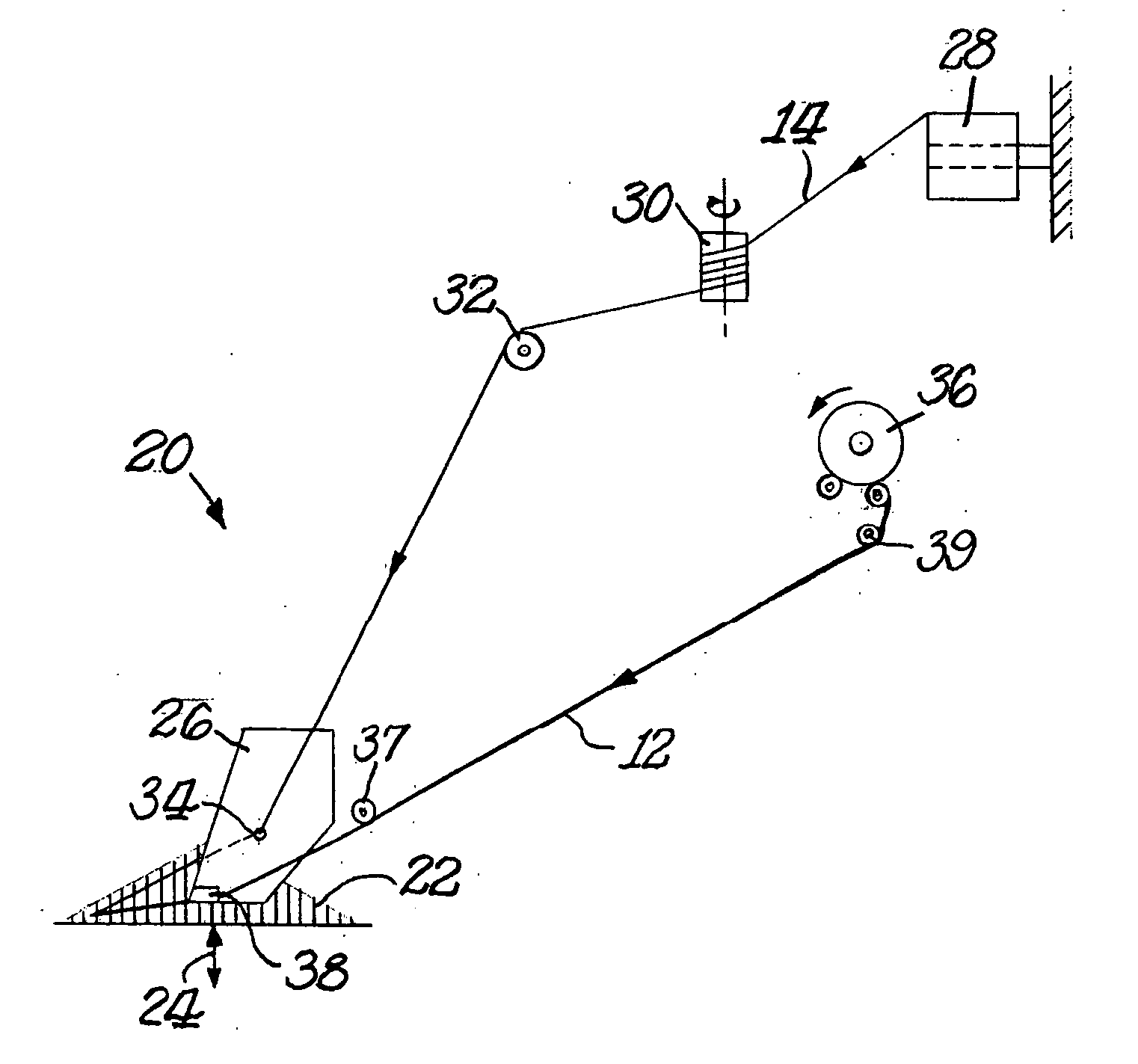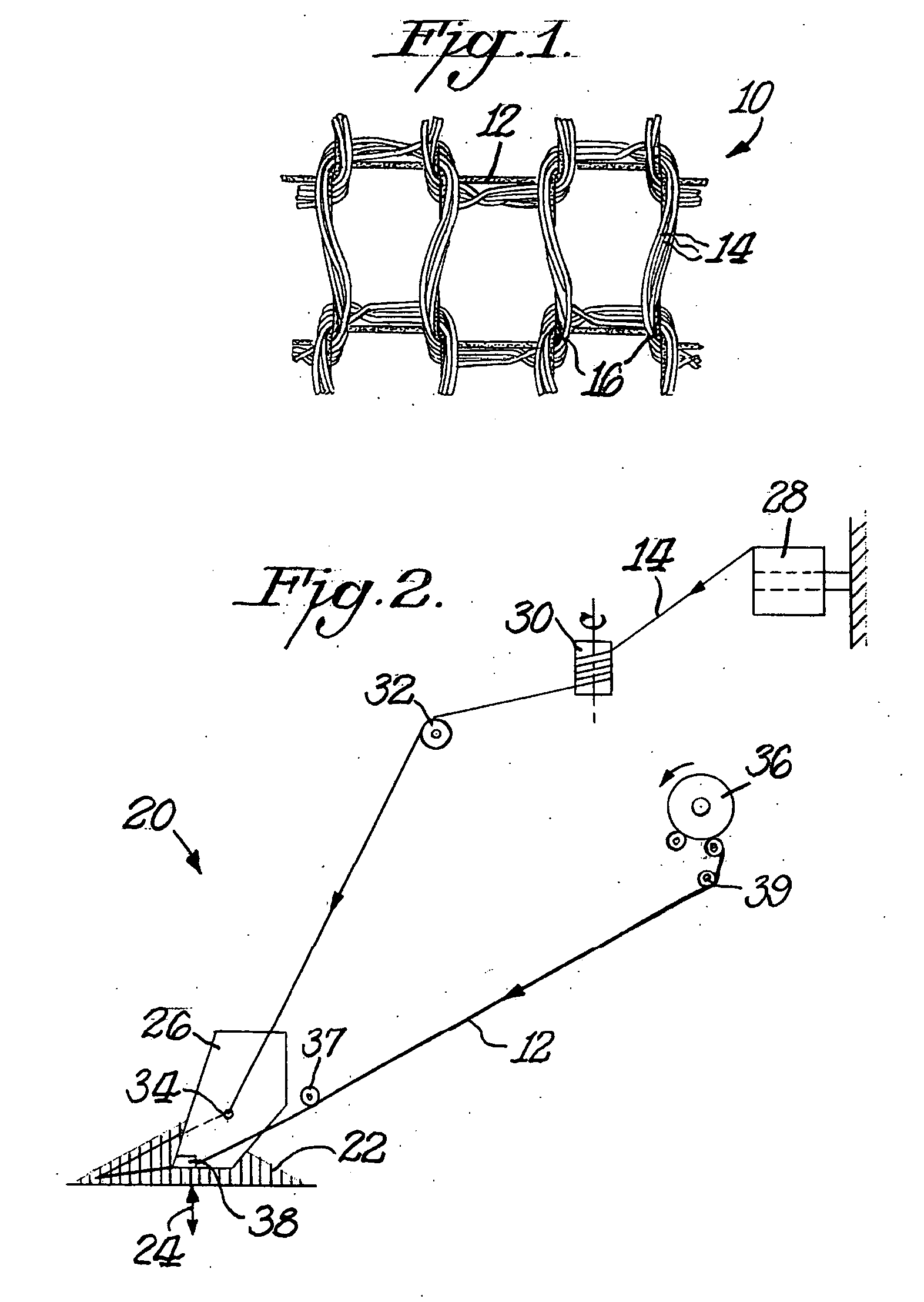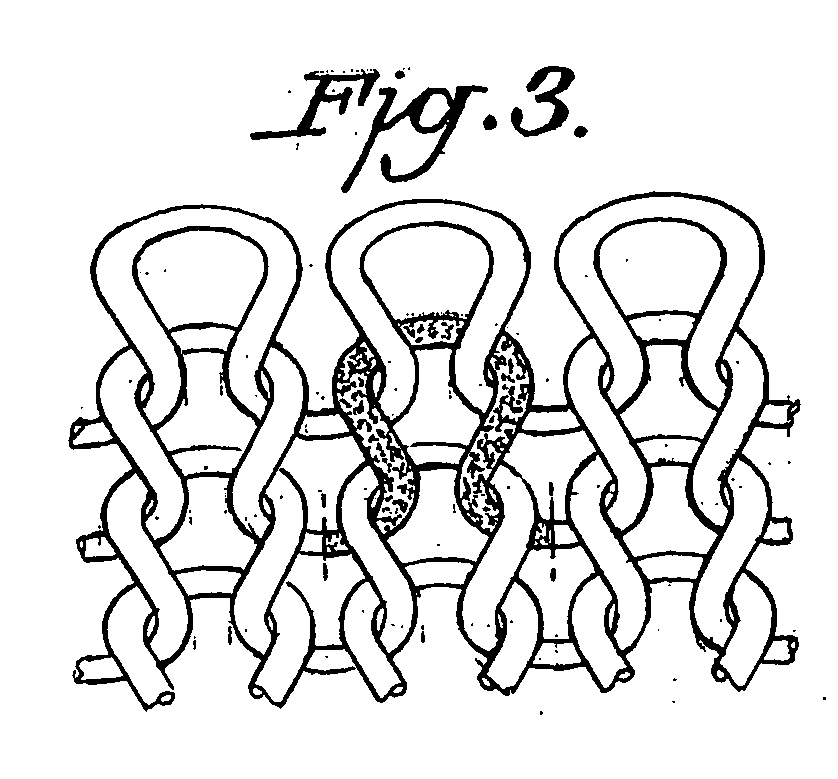Method to make circular knit elastic fabric comprising spandex and hard yarns
a technology of spandex and hard yarns, applied in knitting, ornamental textile articles, textiles and papermaking, etc., can solve the problems of limiting the total recovery force of knit stitches, single knit fabrics may experience permanent deformation or ‘bagging’, and the general recovery of knit stitches by knit stitch rearrangement is not compl
- Summary
- Abstract
- Description
- Claims
- Application Information
AI Technical Summary
Benefits of technology
Problems solved by technology
Method used
Image
Examples
examples 1-32
[0099] Fabrics were scoured and bleached in a 300-liter solution at 100° C. for 30 minutes. All such wet, jet finishing, including dyeing, was done in a Tong Geng machine (Taiwan) Model TGRU-HAF-30. The water solution contained Stabilizer SIFA (300 g) (silicate free alkaline), NaOH (45%, 1200 g), H2O2(35%, 1800 g), IMEROL ST (Clariant, 600 g) for cleaning, ANTIMUSSOL HT2S (Clariant, 150 g) for antifoaming, and IMACOL S (Clariant, 150 g) for anticreasing. After 30 minutes, the solution and fabric were cooled to 75° C. and then the solution was drained. The fabric was subsequently neutralized in a 300 liter solution of water and HAC (150 g) (hydrogen+dona, acetic acid) at 60° C. for 10 minutes. After scouring, new fresh water was added to the jet for the hydro-set step, 74, in FIG. 6. The fabric was run in the jet with water at about 105° C. to about 140° C. for about 15 to about 90 minutes.
[0100] The fabrics were dyed in a 300-liter solution of water at 60° C. for 60 minutes, using ...
examples 33-40
[0102] Examples 33-40 were bleached and hydro-set in a jet dye machine (Scholl sample jet rd, Scholl-Then, Safenwil, Switzerland) at 95° C. for 20 minutes. The concentration of ingredients in the bleaching solution, based on fabric weight, were as follows: 8% owf hydrogen peroxide, 1% owf Stabilon EZY® (CIBA Specialty Chemicals, High Point, N.C.), and Acetic Acid to neutralize. The liquor ratio was 1:8. The bleaching bath temperature was raised from 49° C. to 95° C. at the rate of 4° C. per minute. The process was operated at 95° C. for 20 minutes, followed by cool down to 63° C. at the cooldown rate of 7° C. per minute. The bleaching bath was then drained and the machine recharged with 49° C. water heated to 77° C., run for 8 minutes, and drained. The bath was charged once again with 49° C. water, neutralized with acetic acid at 77° C. for 8 minutes, and drained. The bath was charged once again with 49° C. water, heated to 120° C. at a rate of 5° per minute and hydro-set for 20 min...
example 1
[0120] The 20-denier spandex feed tension was 1.5 grams (1.47 cN), which is in the range of 4 to 6 cN. The hard yarn in this example was ring-spun cotton (32 Ne, 165 denier). The fabric was dyed and finished according to the process 63a schematically shown in FIG. 5. The fabric is slit and dried open width as in 63a.
PUM
| Property | Measurement | Unit |
|---|---|---|
| temperature | aaaaa | aaaaa |
| elongation | aaaaa | aaaaa |
| shrinkage | aaaaa | aaaaa |
Abstract
Description
Claims
Application Information
 Login to View More
Login to View More - R&D
- Intellectual Property
- Life Sciences
- Materials
- Tech Scout
- Unparalleled Data Quality
- Higher Quality Content
- 60% Fewer Hallucinations
Browse by: Latest US Patents, China's latest patents, Technical Efficacy Thesaurus, Application Domain, Technology Topic, Popular Technical Reports.
© 2025 PatSnap. All rights reserved.Legal|Privacy policy|Modern Slavery Act Transparency Statement|Sitemap|About US| Contact US: help@patsnap.com



